While I am anti-diet and food rules, I’m sharing some of the nutrition goals that I abide by when it comes to eating real food.
Y’all know I’m not about diets. I’ve been there, done that in my days.
After becoming a Registered Dietitian, my philosophy on food shifted to focus on intuitive eating. And I’ve always been about eating real food – after all, Kath Eats Real Food is going on 14 years!
I don’t like the idea of food “rules” whatsoever – because, let’s be real: the more rules/restrictions one has the more disconnected you are from having peace with food.
However, I am very mindful of the quality of my food.
That’s all to say, there is plenty of room for a piece of confetti cake when life calls for it!
A spin-off of Michael Pollan’s Food Rules: An Eater’s Manual, a book I read and enjoyed years ago, these are the 10 nutrition goals (or a general manual) I strive to meet when serving nutrient-dense foods to my family.
KERF Eater’s Manual: Our 10 Nutrition Goals
1. Eat seasonally.
Eat seasonally and eat the rainbow.
Just like we dress differently in the summer than we do in the winter, what we put IN our bodies should change seasonally, too.
Spring and summer, I’m all about the crunchy salads, juicy stone fruit, ripe strawberries, and berry smoothies.
Come fall and winter, my body craves warmth and comfort. We roast a lot of root veggies and starches, make hearty soups and enjoy creamy bowls of oats versus cold overnight oats. (Although we’ve still been on the smoothie train because my kids love them and they’re the best way to deliver greens to a toddler!)
If you’re not sure what foods are in season when, just look for the products that appear front-and-center in the produce section of your grocery store.
You’ll probably notice the baskets of berries in the summer alongside mounds of zucchini and fresh lettuces, and bins of juicy peaches (depending on where you live). In the colder months, you’ll see pears, apples, grapes, citrus, potatoes, pomegranates, and more!
This is one of our summery favorites: Summer Pasta Salad with Herb Dressing.
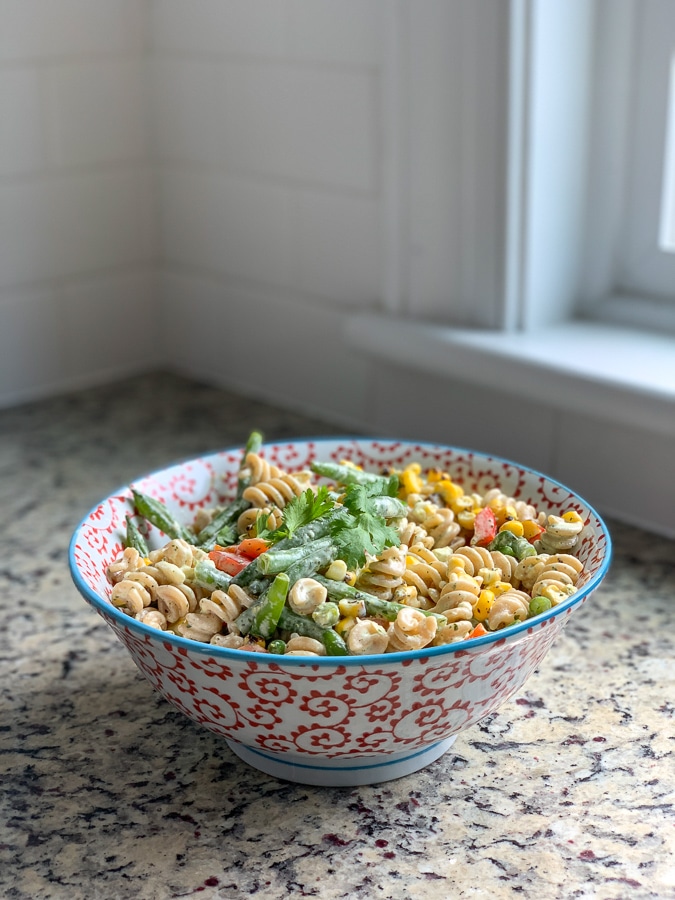
2. Eat Omega-3 fish at least 1x per week.
While I use plenty of olive oil, nuts, and seeds throughout the week, I try to eat fish high in omega-3 fatty acids at least once per week – including sardines – you know I love ’em!
DHA + EPA omega-3s are essential long-chain fatty acids that are “essential” because we have to get from food. You’ll find them mostly in fish and directly from algae, but you can also get them from fortified foods and supplements.
Wild salmon and herring top the list of the most omega-3 per three ounces at 1800 mg. Following those are anchovies (1200 mg), rainbow trout (1000 mg), and sardines (800 mg), which also have calcium, vitamin D and iron. Shrimp and canned tuna have about 250 mg of omega-3 each.
This site has a great overview of best choices taking into account omega-3s, mercury, and sustainability.
Check out Catch Sitka for wild fish shipped frozen right to your door so you’ll always have it in stock to pull out and enjoy once or twice a week.
Try my Every Herb Salmon Salad – it’s great for lunch!

3. Choose full-fat, organic dairy.
The KERF household is by no means dairy- or gluten-free (after all, I used to own a bakery!).
I am a cheese girl through and through, and we love our yogurt bowls, oats, smoothies, and cereal. That said, I think it is very important to choose organic dairy when at all possible. Grass-fed is even better. We also always buy whole milk. Why so?
“Although for decades dairy fat consumption has been hypothesized to be a risk factor for CVD, as well as potentially diabetes, weight gain, and cancer, little empirical evidence for these effects existed from studies of clinical events. In current years, a growing number of prospective studies have shown generally neutral or protective associations between self-reported dairy foods and dairy fat consumption with the risk of CVD, diabetes, weight gain, and cancers, raising questions about this conventional wisdom.” –Journal of Clinical Nutrition
Also check out this post Anne wrote about eating more: Why This Registered Dietitian Eats More Fat.
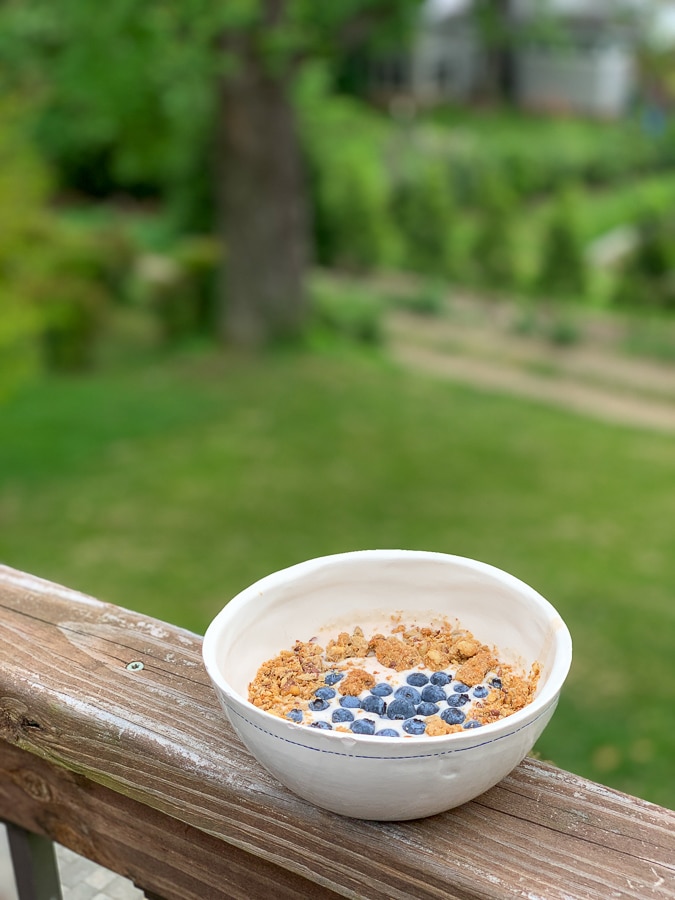
4. Pick pasture-raised eggs.
You’ve probably seen “cage-free,” “free range,” and now what’s most popular among the egg cartons is “pasture-raised” – for good reason. Why do we prefer pasture-raised?
“These hens are allotted at least 108 square feet per hen. They eat a combination of carefully balanced supplemental feed and whatever they can find in the dirt when they go outdoors including grass, worms and bugs. They are able to leave the barns early in the morning and are called back before nightfall.
Nutritionally, pasture-raised eggs have some differences, too. Compared to factory eggs, pasture raised have more vitamin A, omega-3 fatty acids, and vitamin E. [Matt] O’Hayer [founder of Vital Farms] attributes this to the varied diet pasture-raised hens enjoy and lifestyle. His hens live a lifestyle that’s ‘cleaner, less stressful, less competitive, plenty of fresh air and sunlight — and it’s obvious why the eggs are so much better.’” – Food Network
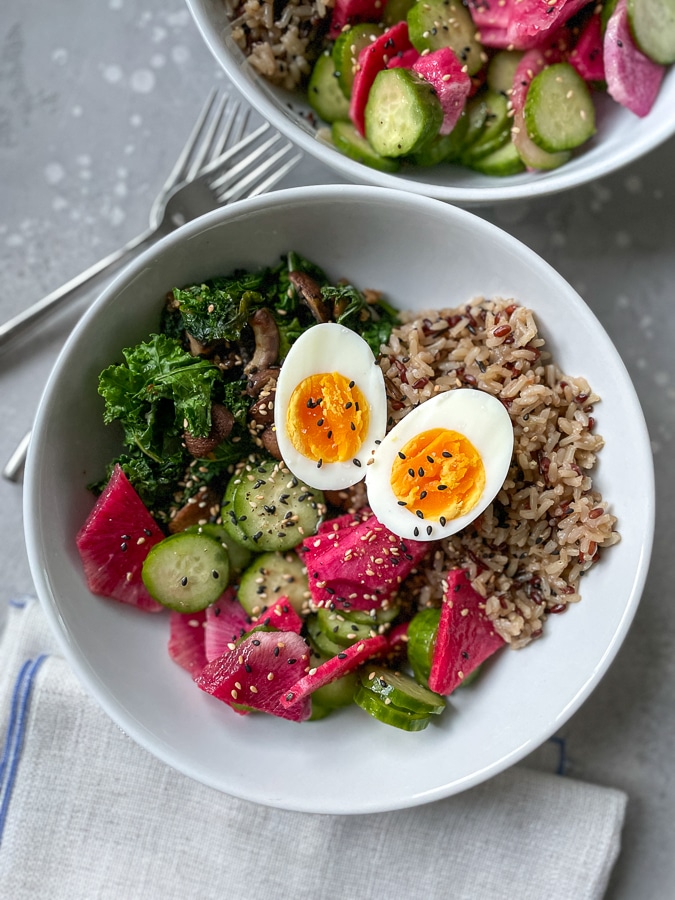
5. Incorporate macros at all meals/snacks: carbs/fats/protein.
As for macros, I do not mean counting them. You won’t see me counting calories, macros, or anything related to nutrition. I’m all about quality over quantity, and I think the weekly average of what you consume is more important than hour by hour.
That said, I do attempt to incorporate all three macronutrients (carbohydrates, protein, and fat) into each meal and snack I eat simply because it’s the most satisfying combination. The protein and fat take longer to digest and will keep you feeling satisfied for longer.
For example, a snack might be a slice of toast with peanut butter = carbs from the bread, and protein and fats from the peanut butter versus a plain apple (just carbohydrates). Simple as that.
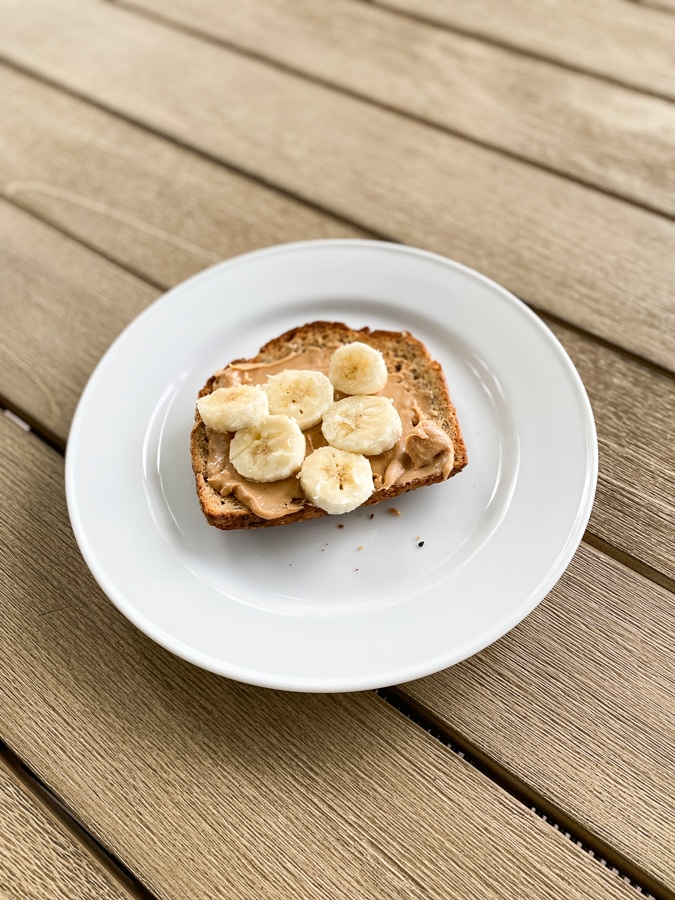
6. Direct your attention to the the Dirty Dozen.
While we don’t buy everything organic, it’s a priority for us – especially when it comes to produce without peels and/or on the Dirty Dozen list (like strawberries, greens, tomatoes, and potatoes).
We’re less strict about the items on the Clean Fifteen list as they’re known to be grown with fewer pesticides.
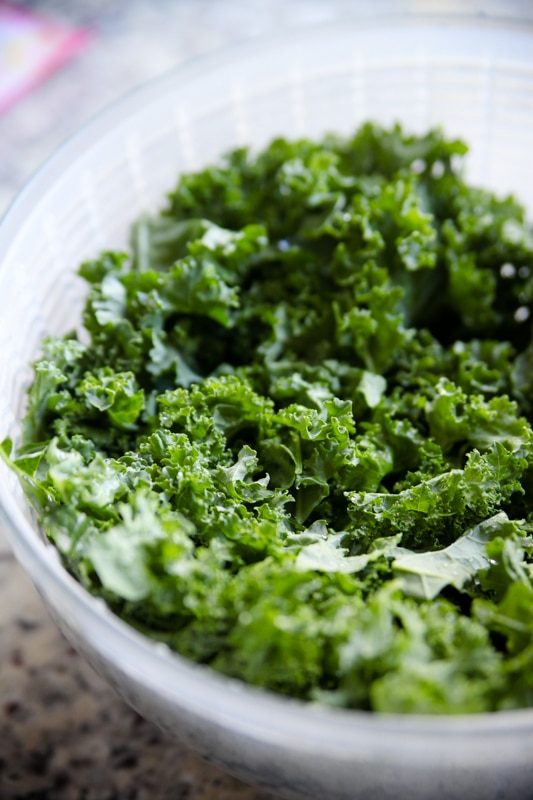
7. Avoid long ingredient lists.
While my focus is on real, whole foods, there’s a time and place for packaged foods, too (especially with young kids). And I love packaged foods that help me with convenience – like Daily Harvest or Splendid Spoon meals and smoothies for days when my fridge is feeling empty.
Our pantry has its fair share of crackers and cereals, and condiments, too. Something they have in common: ingredient lists that are short and words that are pronounceable. Sugars listed high on the list are usually a no go, too. (Unless, of course, I’m eating dessert!)
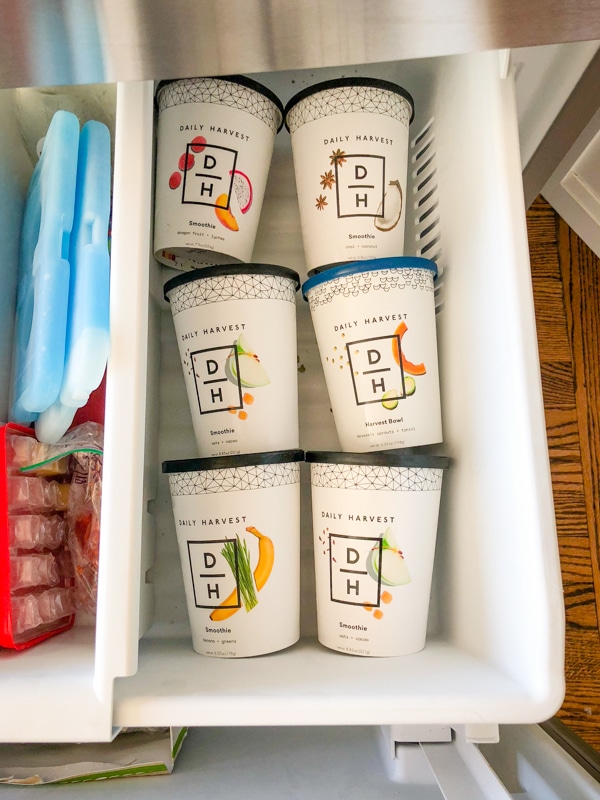
8. Drink mostly water, sometimes wine.
While I enjoy a morning cup of coffee (or two!), I stick to water throughout the day and aim to fill up my water bottle a few times during the day.
Come evening time, I do enjoy a glass of wine, but my goal with alcohol is to take at least three nights off a week and never to have more than 2-3 drinks at one time (otherwise, it leaves me with an icky hangover the next morning). For women, it’s recommended to have no more than seven drinks per week so that is my goal but who are we kidding, some rules are meant to be broken occasionally!
I have been focusing more on clean wines over the past year as well. I’m a partner with Scout + Cellar, which focuses on wine made without synthetic pesticides and chemical additives and has fewer than 100ppm of total sulfites.
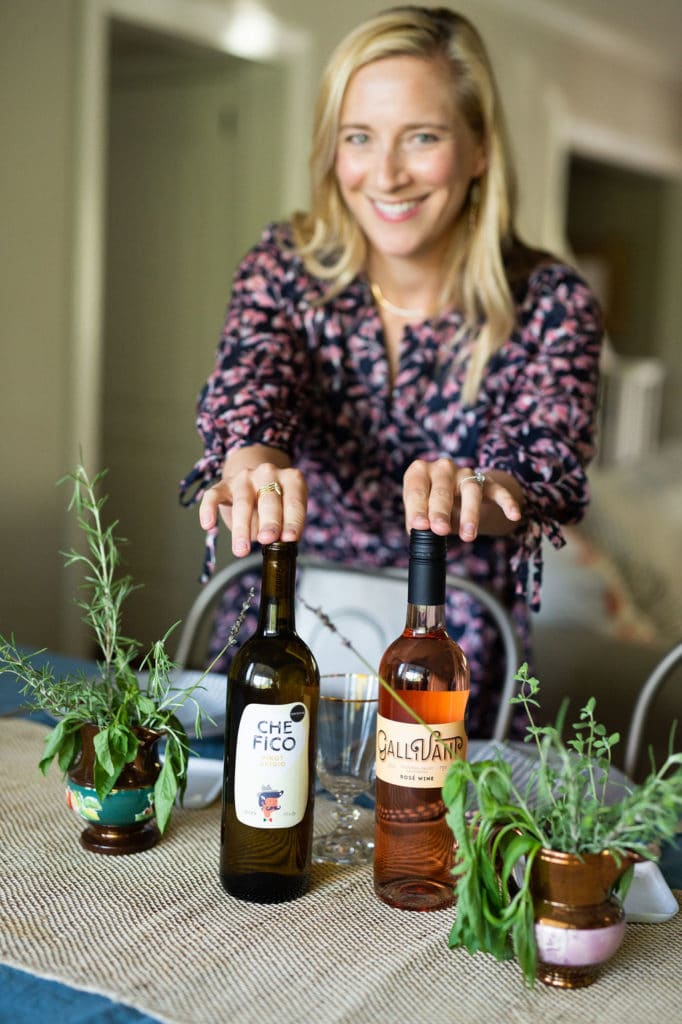
9. Prioritize pasture-raised meats.
Just like we prefer pasture-raised eggs, we prioritize pastured meats too.
Whether it’s from Butcher Box, or our local farmer’s market, we purchase meat that is humanely raised, never given antibiotics or added hormones, and from animals that are grass-fed and grass-finished. Animals that are grass-fed (versus corn-fed) have higher amounts of omega-3s, vitamins, and minerals.
“If you’re buying grass-fed beef at the grocery store, you might not be getting what you expect. Typically, grain-fed or grass-fed cattle start their lives on pasture but are later confined to feedlots where their diets can include grains. Grass-fed, grass-finished cattle—also known as 100% grass-fed—are free to roam on pasture for their entire lives, not just while they’re calves.” – ButcherBox
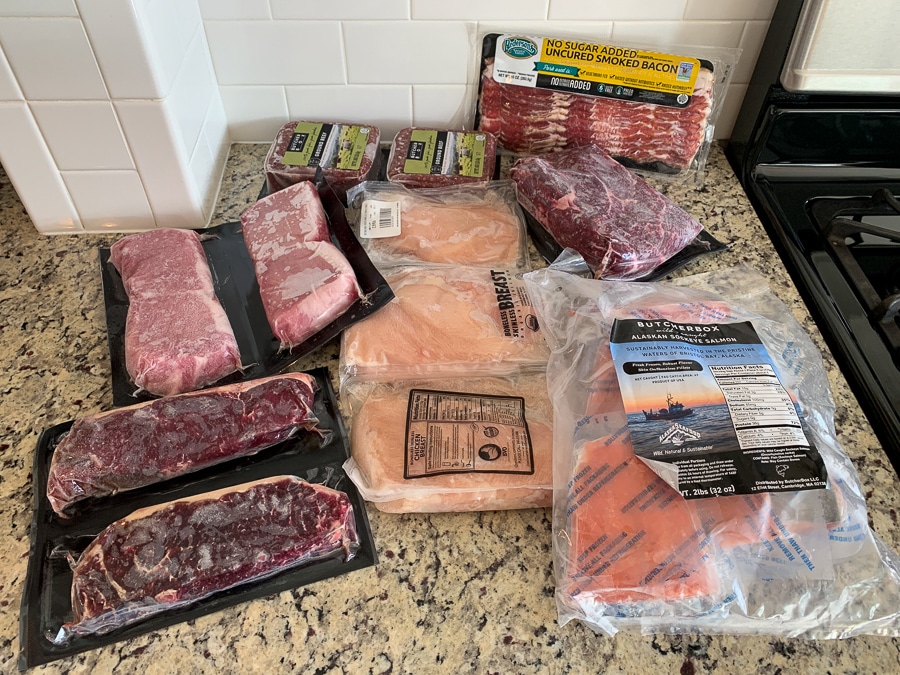
10. Enjoy fruit(s) or vegetable(s) at every meal.
Nowadays, I can’t imagine a pizza night without a big ol’ heaping pile of salad on my plate. Breakfast without a serving of fruit (whether that’s blueberries in my oatmeal, banana on my toast, or citrus in my smoothie) just feels off.
As cliche as it sounds to “eat the rainbow,” that mentality does help to diversify what we’re eating daily and weekly. If you have sweet potatoes and kale in your meal prep one week, shoot for bell peppers, carrots, and spinach the next.

BONUS: Listen to your body.
When in doubt, throw out any goals you may have and tune into your body. What does it need?
This is the essence of intuitive eating. And whenever possible, make meals as mindful as you can – meaning, don’t scarf down your kids’ quesadilla at the kitchen counter while scrolling social media (though we all do it now and then!).
Sure, it’s fun to enjoy a snack while watching your favorite TV show, but aim to eat your meals in a calm setting – preferably sitting down with as few distractions as possible.

As Michael Pollen says, “When you eat real food, you don’t need rules.”
What are the nutrition goals of your eater’s manual?



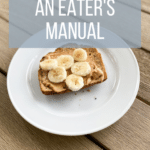

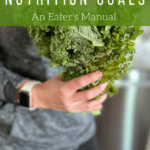

Betsy A Fry says
Wonderful article Kath! I have been a life coach that works with women and eating for years. I agree with everything you wrote and can vouch for peace with food when people let go of diets and listen to their bodies.
Kath Younger says
Thank you!
Charmaine Ng | Architecture & Lifestyle Blog says
Your food looks so good! Thank you for the tips! 🙂
Charmaine Ng | Architecture & Lifestyle Blog
http://charmainenyw.com
Nancy says
https://www.nevacochranrd.com/blog/the-dirty-dozen-is-a-dirty-lie?fbclid=IwAR22uXXpCw1Wf8whoWY6i8nNfbM7WxAAnhtyD5zV5duPJTvCbKtOrXw_C4M
another point of view on the “dirty dozen”
K says
Yup, the Food Science Babe over on Insta has some really good posts on why the Dirty Dozen isn’t particularly evidence-based.
Valerie says
Hi Kath,
Love this post. Do you have any tips or recipes for feeding sardines to kids? I have a 2 and a 4 year old, and they love tuna. I’d like to incorporate sardines more instead because of the lower mercury.
Thanks!!
Kath Younger says
I used to simply cut one in 3-4 pieces and Mazen would cram them in! When he was a little older he would eat the whole fish like a “cartoon.” I can’t say he’s had one in a really long time….and Birch won’t touch them but he is very picky. If they won’t eat them as bites, try something like tuna noodle casserole but use sardines instead? Or maybe they would like them as a dip? However they eat tuna – try that!
Alex says
Our kids love – LOVE – this pasta recipe: https://cooking.nytimes.com/recipes/1013094-pasta-with-sardines-bread-crumbs-and-capers. My six year old calls it “Sardine Surprise” (ha). We add a pile of finely chopped kale to it, but otherwise we have it as-is. And the video that goes with it is pretty fun, too. Highly recommend.
Kath Younger says
Oh wow! Looks great!
Louise A Olafsson says
That was a really well written and informative post. Thank you.
Kath Younger says
thanks!
Hillary Gras says
This was a really nice, realistic post. It’s a good reminder too about eating the rainbow and eating seasonally. I really miss our farmers market 🙁
Nancy says
What a great post. I read Michael Pollan’s book a few years ago and loved it. We try to make things so complicated. I have completely unfollowed any blogger or influencer who is into restrictive eating, counting macros or brutal exercise. Eating a rainbow, focusing on plants and doing the exercise that feels right for me ( yoga and walking) has brought a lot of peace. It’s also brought a stronger and healthier body. My dr commented recently that she has never seen anyone with good cholesterol as high as mine. While that wasn’t my goal, I’ll take it.
Suzanne Bryson says
You did an amazing job on this post. As a fellow RD, I agree 100% with your nutrition philosophy. I will happily share this post with family and friends. The most important thing we can do to get and stay healthy is to put good food in our bodies. Keep these nutrition posts coming. I love them. Thank you!!
Kath Younger says
Thanks so much Suzanne!
Amanda says
Love these posts. Always a good reminder.